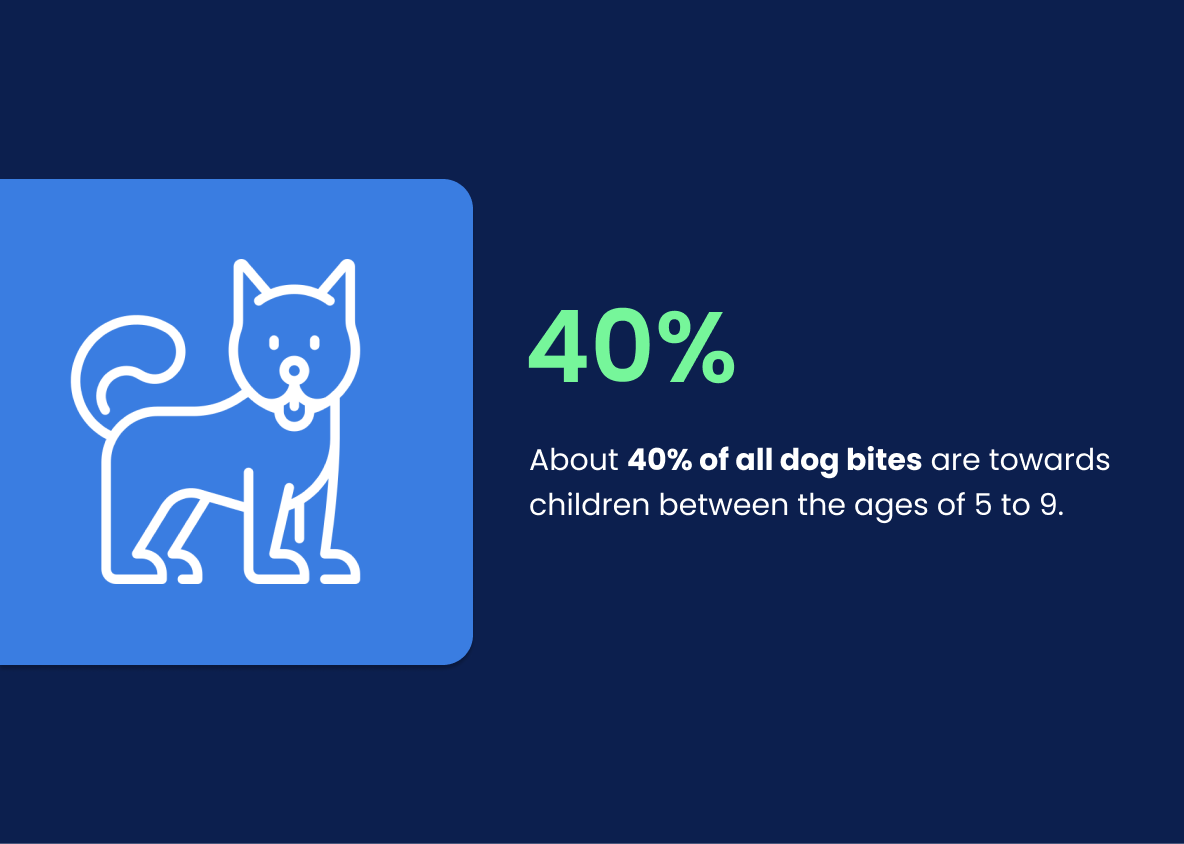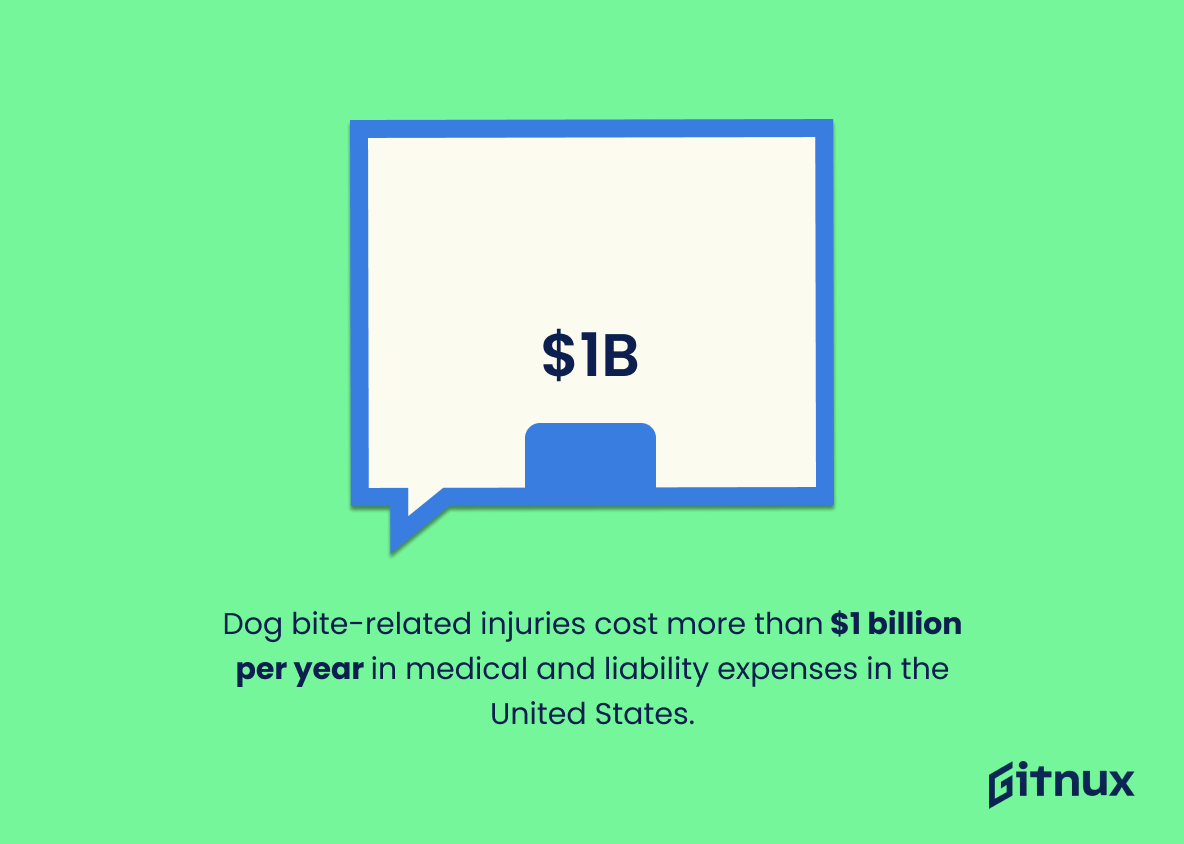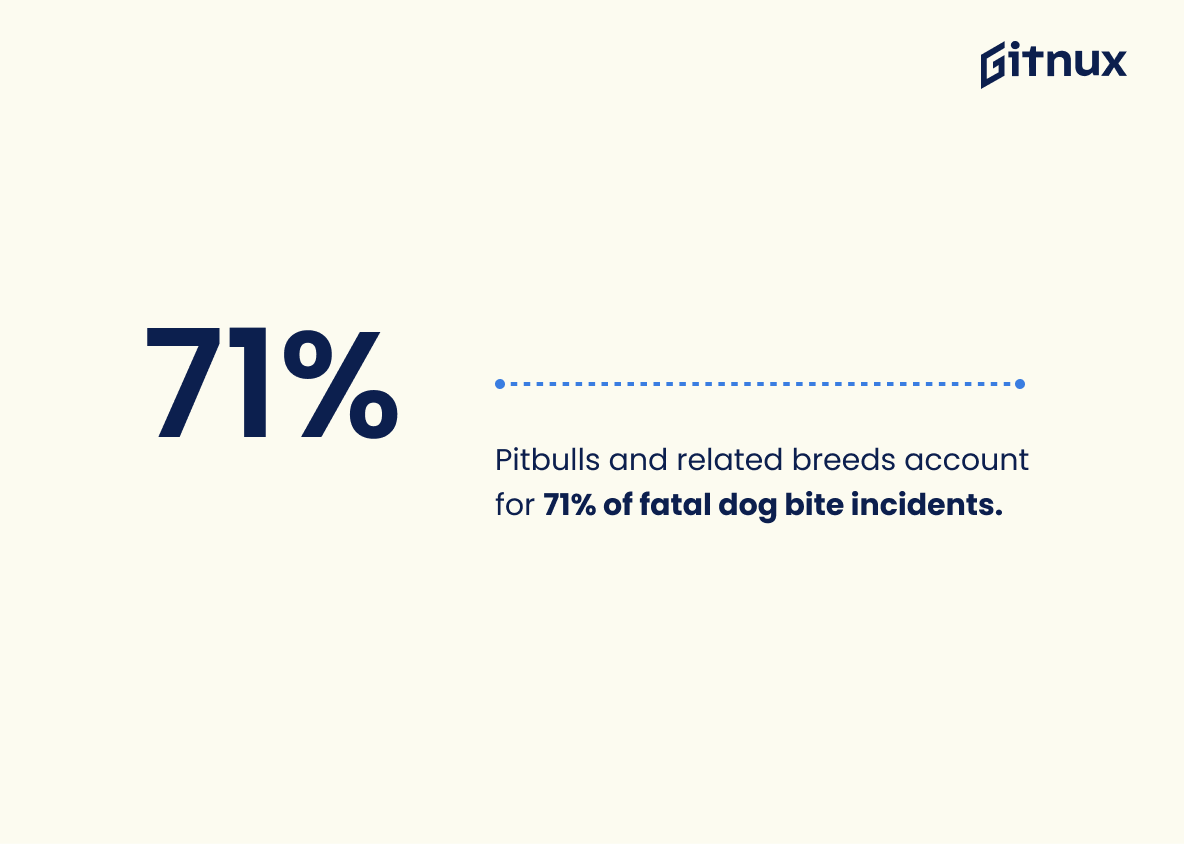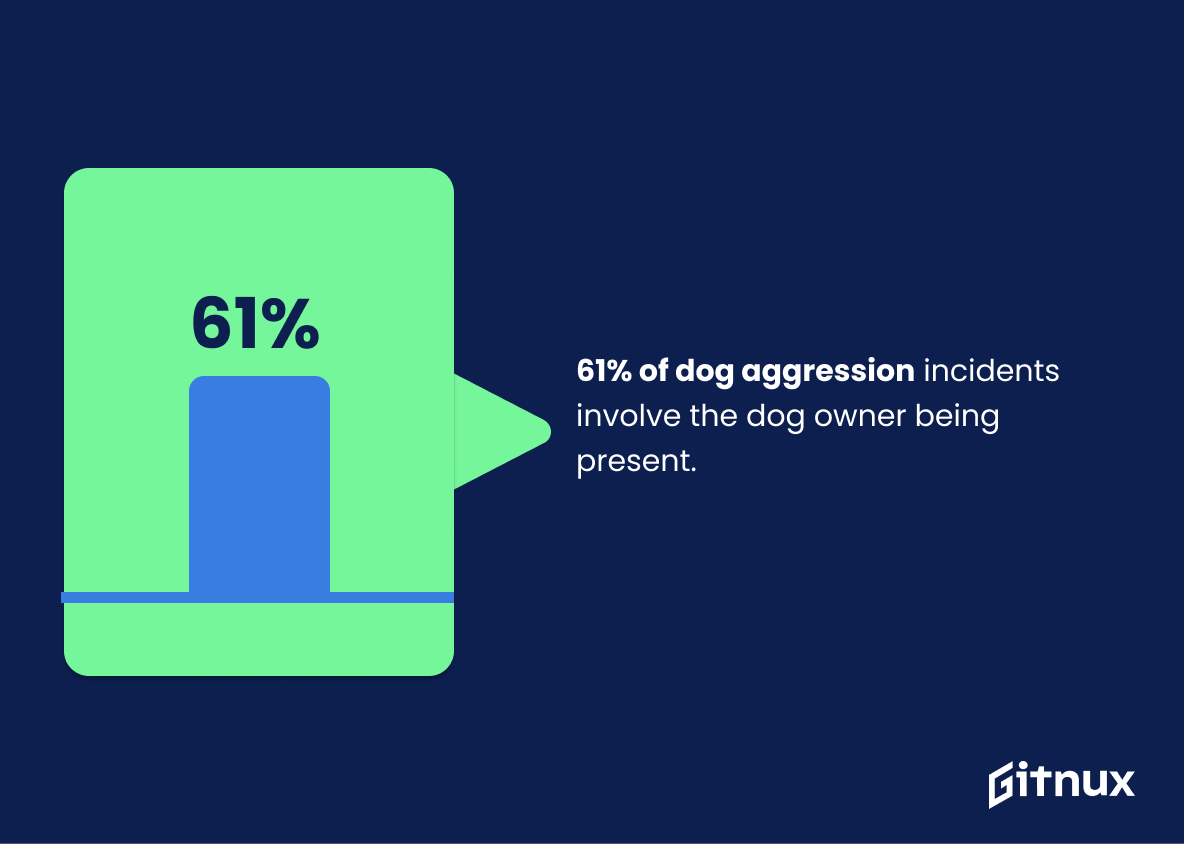Dog aggression is a serious issue that affects millions of people and their pets every year. According to the Centers for Disease Control and Prevention, approximately 4.5 million dog bites occur in the United States annually. Over 47% of all dog-related injuries are due to aggressive behavior from dogs, with male dogs being 6.2 times more likely than female dogs to be aggressive towards humans or other animals.
Children between 5 and 9 years old make up 40% of all reported cases involving dog bites, while 25% can be traced back to fear-based aggression issues within the animal itself. Additionally, 45% of those bitten by a canine had no prior interaction with it before the incident occurred; over 70 percent happened on private property belonging to either an owner or family member; Chihuahuas were found as statistically most prone toward aggressiveness followed by Dachshunds and Jack Russell Terriers; 90 percent involved unneutered males; 66 percent resulted in injury primarily affecting arms/hands; 41 percent included multiple canines at once during incidents; medical costs associated with such events total over one billion dollars per year nationwide according to Insurance Information Institute data (III); 71percent involve Pit Bulls or related breeds when fatalities result from attacks upon humans – 61percent if children are victims specifically – 72percent happen when owners fail keep their pet isolated away from regular human contact regularly enough for proper socialization purposes ; 75percent have been linked directly back abuse suffered previously by said animal(s) themselves , 62precent leash-aggressive ones having experienced some form trauma beforehand too ; 3times higher chance acquiring problem pooch coming pet store backyard breeder rather reputable source like shelter rescue group lastly 50plus percentage directed another doggy not person .
Dog Aggression Statistics Overview
About 40% of all dog bites are towards children between the ages of 5 to 9.
This statistic is a stark reminder of the potential danger that dogs can pose to children. It highlights the importance of teaching children how to interact with dogs in a safe and respectful manner, as well as the need for parents to be vigilant when their children are around dogs.
Roughly 25% of aggressive dog incidents can be traced back to fear-related aggression.
This statistic is a crucial piece of information when it comes to understanding the causes of dog aggression. It highlights the fact that fear-related aggression is a major factor in aggressive dog incidents, and that it should be taken into account when looking for solutions to the problem. By recognizing the prevalence of fear-related aggression, we can better equip ourselves to address the issue and create a safer environment for both dogs and humans.
45% of people who are bitten by dogs have never had any previous interaction with the dog.
This statistic is a stark reminder of the unpredictability of canine behavior. It highlights the importance of being aware of the potential risks of interacting with dogs, even if one has never had any prior contact with them. It also serves as a warning to dog owners to be mindful of their pet’s behavior and to take the necessary precautions to ensure the safety of those around them.
Chihuahuas are statistically the most aggressive dog breed, followed by Dachshunds and Jack Russell terriers.
This statistic is significant in the context of a blog post about Dog Aggression Statistics because it provides a clear indication of which breeds are most likely to display aggressive behavior. Knowing which breeds are most prone to aggression can help pet owners make informed decisions when selecting a dog, as well as provide insight into how to best manage and train their pet.
Approximately 90% of dog bites are from unneutered male dogs.
This statistic is a powerful reminder of the importance of neutering male dogs. Unneutered male dogs are more likely to display aggressive behavior, which can lead to dog bites. By neutering male dogs, owners can reduce the risk of their pet exhibiting aggressive behavior and, in turn, reduce the risk of dog bites.
41% of dog-related injuries involve multiple dogs.
This statistic is a stark reminder of the potential danger posed by multiple dogs. It highlights the importance of understanding the risks associated with having multiple dogs in the same household, and the need for owners to take appropriate precautions to ensure the safety of themselves and others.
Dog bite-related injuries cost more than $1 billion per year in medical and liability expenses in the United States.
This statistic serves as a stark reminder of the financial burden that dog aggression can have on society. It highlights the importance of understanding the causes of dog aggression and taking steps to prevent it, in order to reduce the costs associated with it.
Pit bulls and related breeds account for 71% of fatal dog bite incidents.
This statistic is a stark reminder of the potential danger posed by pit bulls and related breeds. It highlights the need for responsible ownership and proper training to ensure that these breeds are not used as weapons or to cause harm. It also serves as a warning to those who may be considering adopting a pit bull or related breed, as they should be aware of the risks associated with these breeds.
61% of dog aggression incidents involve the dog owner being present.
This statistic is a powerful reminder that dog aggression is often a result of the owner’s behavior. It highlights the importance of owners being aware of their own actions and how they can influence their dog’s behavior. It also serves as a warning that owners should be vigilant in monitoring their dog’s behavior and intervening if necessary. By understanding the role of the owner in dog aggression, owners can take steps to prevent it from occurring in the first place.
72% of dog-related fatalities involve children less than 10 years old.
This statistic is a stark reminder of the potential danger that dogs can pose to young children. It highlights the importance of teaching children how to interact with dogs in a safe and respectful manner, as well as the need for parents to be vigilant when their children are around dogs.
75% of fatal dog attacks were by dogs that were kept isolated from regular human interaction.
This statistic is a powerful reminder of the importance of socializing dogs and providing them with regular human interaction. It highlights the fact that when dogs are not exposed to people, they can become more prone to aggression and potentially dangerous behavior. This statistic is a key piece of evidence that should be taken into account when discussing dog aggression and the potential risks associated with it.
Family dogs are responsible for 61% of dog bite fatalities to children.
This statistic is a stark reminder of the importance of responsible pet ownership. It highlights the need for parents to be aware of the risks associated with having a family dog, and to take the necessary steps to ensure their children are safe. It also serves as a warning to those considering getting a dog, that they should be aware of the potential dangers and take the necessary precautions to protect their children.
Leash-aggressive dogs are 62% more likely to have a history of abuse or other adverse experiences.
This statistic is a powerful reminder that the roots of aggression in dogs often lie in their past. It highlights the importance of understanding the history of a dog before attempting to address any aggressive behavior, as it may be a result of trauma or abuse. This statistic also serves as a reminder that aggression in dogs is often a symptom of a much deeper issue, and that it should be addressed with compassion and understanding.
Dogs with aggression problems are 3 times more likely to have been acquired from a pet store or backyard breeder.
This statistic is a stark reminder that pet stores and backyard breeders are not always the best sources for acquiring a dog. It highlights the importance of researching and finding a reputable breeder or rescue organization when looking for a new pup. It also serves as a warning to potential pet owners that they should be aware of the risks associated with buying from pet stores or backyard breeders, as these dogs may have a higher chance of having aggression issues.
Conclusion
The statistics presented in this blog post demonstrate the prevalence of dog aggression and its potential consequences. Dog bites are a serious issue, with 4.5 million occurring every year in the United States alone, and over 47% of all dog-related injuries being due to aggressive behavior. Male dogs are 6.2 times more likely to be aggressive than female dogs, while children between 5 and 9 years old account for 40% of all reported cases involving canine aggression towards humans. Additionally, fear-based aggression accounts for 25%, 45% involve people who have never interacted with the animal before, 70% occur on their owner’s property, Chihuahuas top the list as most aggressive breed followed by Dachshunds and Jack Russell terriers; 90% of these incidents involve unneutered male canines; 66 % affect arms or hands; 41 % include multiple animals involved at once; pit bulls represent 71 % fatal attacks against humans; 61 % happen when owners were present during incident time frame ; 72 percent fatalities occurred among kids under 10 years old ; 75 percent happened because those pets had limited human contact prior attack event , family pet responsible for 61 per cent deaths related to child victims . Finally it is important to note that 50+percent aggressions directed toward other canines not people It is clear from these figures that proper training and socialization should be provided early on so as to reduce instances of canine aggression which could potentially lead to injury or even death if left unchecked
References
0. – https://www.dogsbite.org
1. – https://www.iii.org
2. – https://www.reuters.com
3. – https://www.pets.webmd.com
4. – https://www.ncbi.nlm.nih.gov
5. – https://www.frontiersin.org
6. – https://www.docs.ufpr.br
7. – https://www.humanesociety.org
8. – https://www.avma.org
9. – https://www.researchgate.net
10. – https://www.cdc.gov
11. – https://www.animalemergency.com.au










